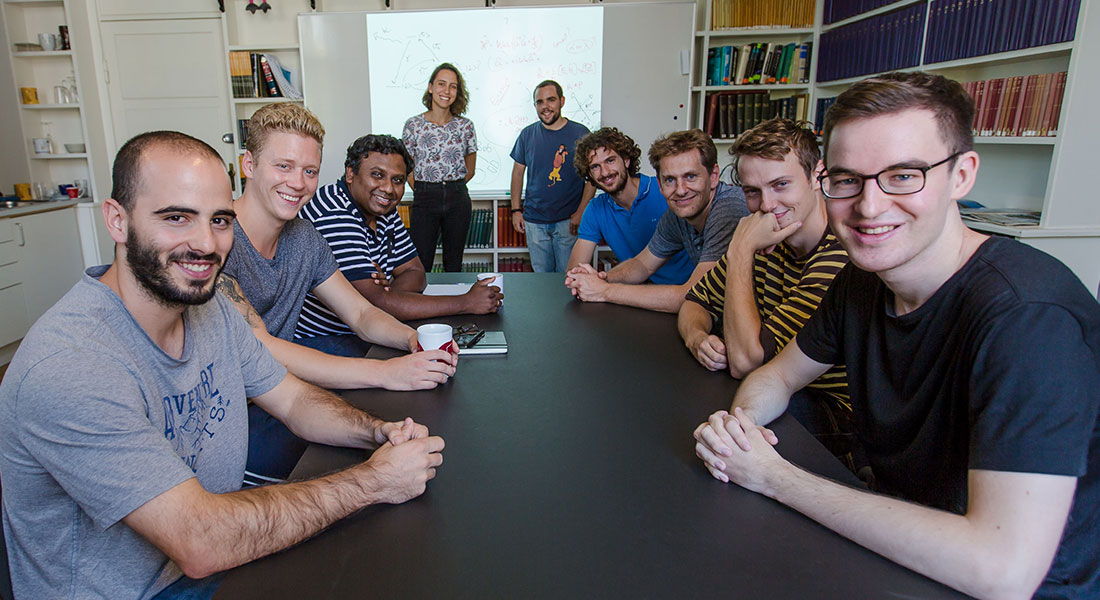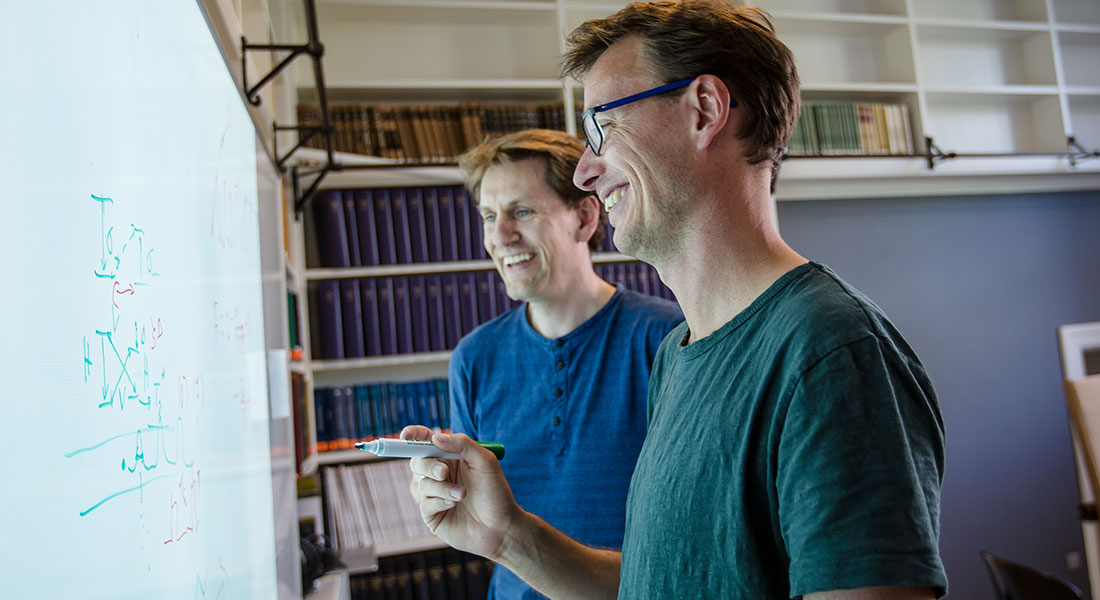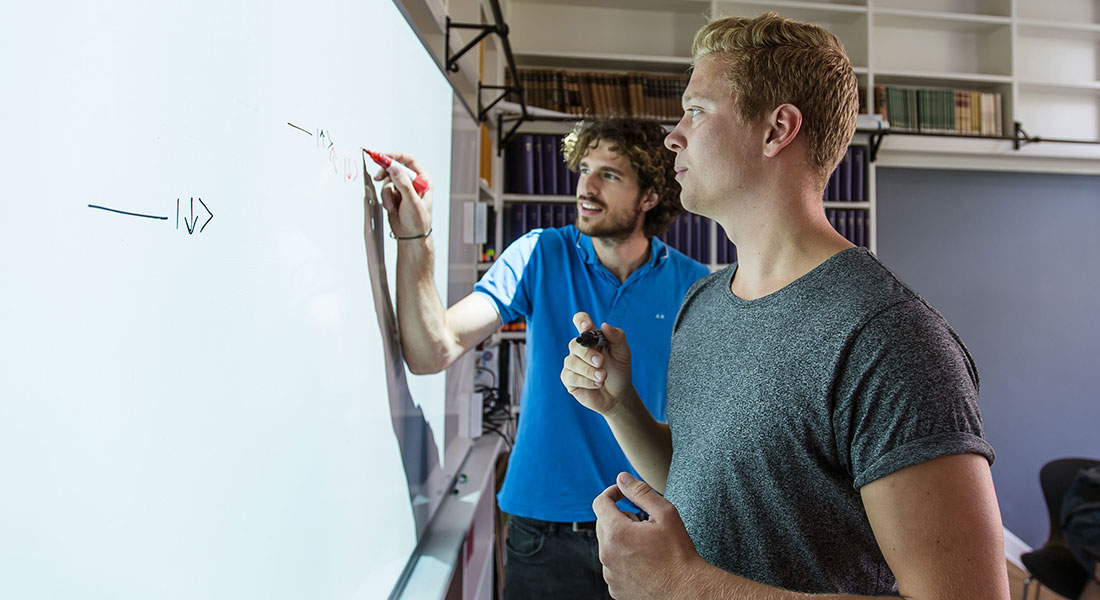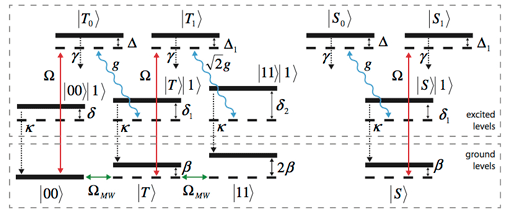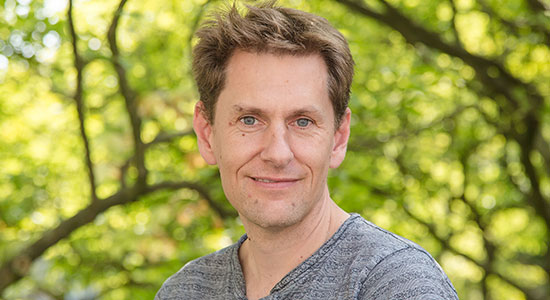
Theoretical Quantum Optics
The group has a strong collaboration with the quantum optics laboratory and the quantum photonics group at the Niels Bohr Institute. We also have a long lasting collaboration with the Lukin group at Harvard University.
The theoretical quantum optics group is headed by Prof. Anders Søndberg Sørensen and was established at the Niels Bohr Institute in 2004.
In 2006-2013 the group was part of the Danish Quantum optics center (Quantop) funded by DNRF and in 2012-2017 the group received funding through a consolidator grant from the ERC for research on Quantum Information and Open System (QIOS 2012-2017).
Currently, the group is part of the Center for Hybrid Quantum Network (Hy-Q) funded by DNRF and a member of the Quantum Internet Alliance.
The research of the group covers a broad range of topics in theoretical quantum optics. Special focus is on methods to realize quantum information processing in practice and we study this in various systems, ranging from atoms and photons to solid state devices. In addition we also make theories for ultra cold atoms.
The group has a strong collaboration with the quantum optics laboratory, the quantum photonics group and the Schliesser lab at the Niels Bohr Institute. We also have a long lasting collaboration with the Lukin group at Harvard University.
Today, experiments have advanced to a stage where one can have complete control of individual quantum systems, such as single atoms or photons. We are making theories for how to exploit this extreme experimental control to gain new insight into nature and to construct quantum computers and other applications.
Quantum information
One of the main research areas of the group is the physical realization of quantum information processing. By constructing quantum computers where information is stored in for instance individual atoms, it is possible to exploit the laws of quantum mechanics to process information more efficiently. Furthermore by sending information in the form of single photons, one can encode information such that it is impossible for an eavesdropper to read the information being sent. Realizing the potential of these ideas, however, requires that one can actually build the devices, and we are developing theories for how to do this in practice.
A particular focus area is quantum repeaters and light-matter quantum interfaces. To transmit quantum information over long distances it is important to have quantum repeater stations along the way to counteract the losses in the optical fibers used to transmit the photons. An essential ingredient in such a quantum repeater is a light-matter quantum interface enabling the exchange of information between light and matter. We are developing theories for how to make such interfaces in a number of systems ranging from individual or ensembles of atoms to solid state systems. Furthermore we develop theories for how to connect the interfaces into quantum repeaters.
Ultra cold atoms
Understanding the properties of strongly correlated many particle quantum systems is a major challenge. Even the most simple models for interacting quantum systems quickly becomes impossible to solve as the number of particle increases. To understand the simple models an alternative approach is to build quantum simulators which mimics the dynamics of a certain model. This is particularly interesting for ultra cold atoms, where the parameters can be controlled almost at will. Thereby one can use atoms to realize some of the quintessential models of condensed matter physics and learn about their properties. We are making theories for how to realize this with the experimental techniques presently available.
The main source of funding of the group is the Danish National Research Foundation through the Center of Excellence grant to the Center for Hybrid Quantum Networks (Hy-Q).
PhD Theses
- Quantum: Illuminated - Theory of light-matter interaction for quantum enhanced technologies, Oliver August Dall’Alba Sandberg, October 2023.
- Single-photon sources as a key resource for developing a global quantum network, Eva Maria Gonzalez Ruiz, January 2023.
- Looking for mechanical hiccups & High dimensional mdi-QKD, Luca Dellantonio, November 2018.
- Quantum Information Processing with Quantum Optical Systems, Vincent Elfving, October 2018.
- Enhancement of optical nonlinearities with stationary light, Ivan Iakoupov, December 2016.
- Electro-Optomechanical transduction & quantum hard-sphere model for dissipative Rydberg-EIT Media, Emil Zeuthen, January 2016.
- Dissipative preparation of entanglement in quantum optical and solid state systems, Florentin Reiter, December 2014.
- Quantum repeaters and atomic ensembles, Johannes Borregaard, November 2014.
- Efficient interfacing of light and surface plasmon polaritons for quantum optics applications, Eran Kot, September 2012.
- Long-distance distribution of discrete and continuous variable entanglement with atomic ensembles, Jonatan Bohr Brask, June 2010.
- Three-Dimensional Theories for Light-Matter Interactions, Martin Westring Sørensen, February 2009.
Master Theses
- Photonic Control-Phase gate based on emitters with chiral interactions, Miren Lamaison Vidarte, June 2021.
- Towards percolation-based quantum computing with a photonic machine gun, Inigo Lara Izcue, May 2021.
- Photon-Photon Interactions in Waveguides, Bastian Bakkensen, November 2020.
- Quantum Key Distribution and Entanglement Distribution with Satellite Links, Anton Lauenborg Andersen, September 2020.
- Chiral photon interaction mediated by a superconducting circuit QED, Carles Roch i Carceller, June 2020.
- Study of InGaAs quantum dots as single-photon sources for Device-Independent Quantum Key Distribution, Eva María González Ruiz, September 2019.
- Fidelity characterization of spin-photon entangled states, Pol Llopart Mirambell, July 2019.
- Spin-photon Entanglement Realised by Quantum Dots Embedded in Waveguides, Mikkel Bloch Lauritzen, March 2019.
- Optomechanical Quantum Memory for Photon Storage, David Cirauqui Garcia, September 2018.
- Cavity-based quantum memory for light with inhomogeneously coupled atoms, Johann Sebastian Kollath-Bönig, March 2018.
- Nonlinear photon interactions in waveguides, Mantas Čepulkovskis, September 2017.
- Continuous Wave Single Photon Transistor with Rydberg Atoms, Iason Tsiamis, February 2017.
- Quantum Gates in Photonic Waveguides, Kasper Ejdal Lund, October 2016.
- Entanglement criteria for Spin Squeezing, Luca Dellantonio, September 2015.
- Dissipative quantum phase transitions in ion traps, Malte Darling Dueholm, March 2015.
- Dissipative Preparation of Entanglement of two emitters coupled to a One-Dimensional Quantum Wire, Frederik Kerling, August 2014.
- Photon gates in atomic ensembles, Ivan Iakoupov, August 2013.
- A Single Photon Transistor Realized by a Three-level Ladder Atom in a Cavity, Marco Manzoni, February 2013.
- Extending cavity-mechanical cooling via a hot LC electrical circuit & Framework for electromechanical coupling calculations, Emil Zeuthen, August 2012.
- Long-Distance Entanglement Distribution Using Coherent States, Johannes Borregaard, August 2011.
- Spin-squeezing in Bose-Einstein condensates, Hjalte Frellesvig, August 2010.
- An Ion Crystal Quantum Repeater, Jonas Meyer Petersen, December 2009.
- Spontaneous emission in light-atom interactions for atomic ensembles, Nikolaj Korolev, December 2009.
- Entanglement Purification for Continuous Variable Photonic States, Mads Lykke Andersen, February 2007.
- Long-distance Communication with Atomic Quantum Memories, Jonatan Bohr Brask, August 2006.
- A Numerical Study: Effective Magnetic Fields in Optical Lattices, Martin Knudsen February 2006.
- Three dimensional theory of light-mater interaction, Martin Westring Sørensen, August 2005.
Bachelor Projects
- Suppressing quantum noise in gravitational wave interferometers using squeezed states, Dina Aaslyng Dall, August 2020.
- Excitation errors from off-resonant excitation in entanglement generation, Emilia My Kjærsdam Telléus, January 2020.
- Quantum sensing under the effect of colored noise, Kasper Hede Nielsen, January 2020.
- Propagation of a photon in an optical wave-guide with multiple chirally coupled emitters, Kristian Lyck Lotzkat, January 2020.
- The effect of dephasing in waveguide QED, Elvira Caroline Jarmbæk Jacobsen, June 2019.
- Dipole-dipole interaction analysis in coupling of light to superconducting qubits, Carlos F. D. Faurby, June 2018.
- The Effect of Different Potentials for Paul Traps and its Application as a Quantum Simulator, Anton L. Andersen, April 2018.
- Observation of Wave Propagation in Stationary Light, Signe Folden Simonsen, September 2017
- Quantum Phase Transition in an Ion Trap, Kasper Ejdal Lund, June 2014
- Coupling of an LC-circuit to a nanomechanical membrane, Yeghishe Tsaturyan, June 2012
- Quantum memory in 2-level systems, Ivan Iakoupov, May 2011.
- Quantum memory for light: Retrieval of stored photons from Λ-type atomic ensembles involving coupling of transverse modes, Emil Zeuthen, July 2009.
- Ionfælder og Kvanteoptik, Jacob Debel og Oluf Tang Engelund, September 2007. (in Danish)
- Nonlinear Optics with Surface Plasmons, Lars Guski and Martin Cramer Pedersen, June 2007
- Entanglement in multiparticle systems, Nikolaj Korolev, 2007. (in Danish)
- Kvantecomputere og fejlretning på kvantecomputere, Frederik Treue, Januar 2006. (in Danish)
Other
We are always looking for motivated and dedicated students with an interest in what we do. Please contact Prof. Anders S. Sørensen at anders.sorensen*nbi.dk if you are interested.
The Theoretical Quantum Optics group at the Niels Bohr Institute is located in the Niels Bohr Building at Jagtvej 155, G-Tower 3rd floor, 2200 København N.
Prof. Anders S. Sørensen, group leader
Office: 02.3.G.062
Office phone: 35 32 52 40
E-mail: anders.sorensen@nbi.dk
Phone: 24 66 13 77
Dorte Christiane Garde Nielsen, Research Secretary
Office: 02.3.G.028
E-mail: Dorte.Garde.nielsen@nbi.ku.dk
Phone: +45 353-30180
News on Quantum Optics

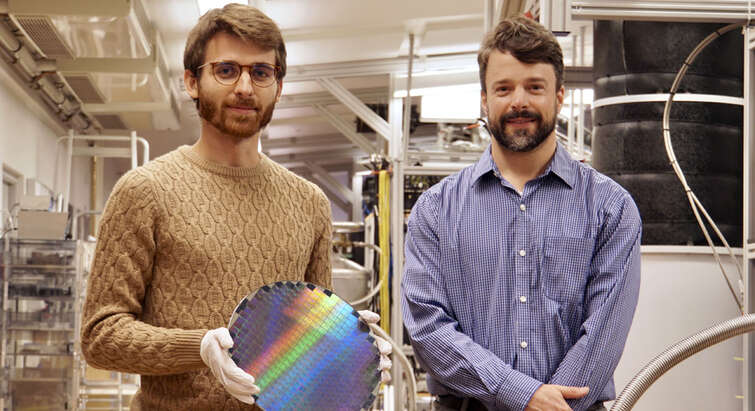
Clever algorithm results in a new method to mitigate noise in quantum devices
Staff
| Name | Title | |
|---|---|---|
| Search in Name | Search in Title | |
| Alba Pares, Joan | PhD Fellow |
|
| Dragasevic, Jan | PhD Fellow |
|
| Gustin, Christopher Charles A | Postdoc |
|
| Hellebek, Emil Rye | PhD Fellow |
|
| Kaufmann, Noah Oliver | PhD Fellow |
|
| Sørensen, Anders Søndberg | Professor |
|
| Tissot, Benedikt Quirinius | Postdoc |
|
External staff & students
| Name | Title |
|---|---|
| Sophia Carmen Simon | Master's student |

